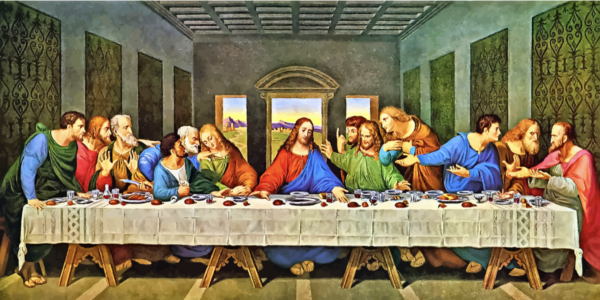Dissecting the new grading system: what is a 7?
One fine evening, my parents brought up the new grading system at the dinner table. My sister was excited to share out the grade she had recently got in her math class. Naturally, my mother reached out for her iPhone to calculate the percentage equivalent of her grade. However, the result did not represent the score my sister earned. As my sister and I were trying to explain the new system to our parents, we referred to numbers so as to explain the difference between grades, but our numbers were different. Then, I realized both of us were wrong.
The new grading system has nothing to do with percentages or intuition. Instead, each number grade has a descriptor that outlines knowledge, understanding, consistency, critical thinking, and, because of trending, provides potential for you to grow as a learner. It mirrors twenty-first century learning, as grades are not averaged. As a further matter, your grade is improved upon and learned.
Some departments are taking the new grading system a step further. For example, the 10th grade Science department has created a new rubric whose focus is not on the end-result, the grade, but rather on the growth the student demonstrates. They came up with a rubric that doesn’t reflect a number as a focus. Instead, it measures how you met the expectations. Strands are: “doesn’t meet expectations”, “approaches expectations”, “meets expectations” and “exceeds expectation”. In addition to this, the department has shifted from those long, and all-class-long tests that are used. They have created summative assessments that are completed within 20 minutes. The idea of learning and chance for redemption is better emphasized this way.
The question every student is eager to know the answer to is, “How do I earn a 7?” Thus, students have debated the meaning of a seven and the way to achieve them. All of us have realized that a seven is to do more than what is asked; it’s to hit the ball far out of the ballpark. The trend-based grading allows the seven to be constructed. One that receives a seven has ultimately learned.
Here are the thoughts of teachers on what a seven represents for them:
Breno Deffanti: A seven is awarded for the student who produces original work. The student understands the material and is able to apply it in an unique and creative manner, that exceeds expectations. Still, a seven is not impossible; a seven is an achievable, yet rare grade. A seven is awarded when the student takes steps beyond what is normal. It’s when he completes the learning process in an original and authorial way.
Shane Hardwicke: I would like to supersede the conversation about a “seven” and suggest that all learning and assessment should be in narrative form that actively involves the student, teacher, peers and any other relevant party. Thus, learning and understanding becomes an ongoing dialogue in oral, written and maybe even artistic form. Thus, the process of learning becomes one that is more natural and meaningful… more human; without a contrived quantitative value that is inherently flawed in its very nature. That being said, as we continue to operate in a “tail wags the dog” scenario, it’s imperative that we provide the opportunity and instruction for all students to achieve a “seven” in every subject, and that students uphold their end of that responsibility if achieving a “seven” is their desired goal.
Here are the thoughts of students on what a seven represents for them:
Leo Von Mutius (Grade 9): As it is, many Graded students can only dream of receiving a report card with sevens. And, to be honest – I think that’s perfectly fine, because scoring the best possible grade should invariably be the mark of a student that really goes the extra mile. Few people are able to consistently put their best effort into their work, hence, few students should be dishing out sevens.
Gabi Rocha Campos (Grade 9): A seven for me doesn’t always represent the whole “original, creative and insightful” thing that is mentioned in the rubric. I personally think of it as a finish line for a race. If you want to be the first to cross, it is required for you to use every bit of energy you have, be dedicated and constantly try your absolute best. That doesn’t necessarily mean doing anything creative, original or insightful, it just means handing in something you’re actually proud of. Something that you’ve put a lot of effort and dedication into; be it through an original, creative and insightful way or not.
Jenny Lee (Grade 10): A seven is to strive for a limit you thought you could never reach before; after fully understanding the material, making critical thinking answers and unique, creative connections using so.
Luis Wolfrid (Grade 11): A seven is following through with the perspective a teacher is attempting to apply to you and exceeding within their desired criteria. At least, that is what it has proven to be.
Fe Sayão (Grade 11): I believe a seven is supposed to push students to their limits, meaning the student should fully understand the material and use their critical thinking to apply it to new and unfamiliar situations. Only very few students should be hitting the seven bar, or else it defeats the purpose of the system. Still, I think every student should make it their goal to achieve a seven, and work for it! It shouldn’t be easy, but it also shouldn’t be impossible.
Michael Borger (Grade 12): Fewer people get sevens in the IB than fives in the AP, which are both the maximum achievable grades. Even though I am not graded on this scale, it’s fascinating to see on colleges’ websites that 7’s are worth the same as a 5 in AP. And that sucks when you are a senior.
It’s important to understand the grading system at Graded and that it represents more than just a number. By allowing students to trend their grades, it reflects the process of learning, growth and achievement, which is what learners should always strive for. It is important to reflect on how the change has affected us as learners and understand the grade benches for each of our classes. Graded has joined the herd to reflect twenty-first century learning.













Claudia Romero • Nov 12, 2015 at 10:57 am
What happens when you change to another school?
What grades will they reflect in your report? Will other schools understand the system?. Please write a second part about this subject giving concrete examples of kids that are moving to other schools.